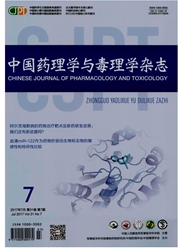

 中文摘要:
中文摘要:
量子点作为一种新型的纳米材料,由于其独特的光电学特性可以广泛地应用于生物医学领域,因而其安全性已成为研究热点。中枢神经系统作为量子点作用的潜在靶器官之一,量子点的神经毒性研究也受到一些研究者的关注。量子点可跨越血脑屏障或通过神经通路进入中枢神经系统,产生破坏神经细胞结构和功能、损伤神经突触可塑性等神经毒性效应,其作用机制可能与氧化应激、炎症反应和离子通道改变3条途径有关。
 英文摘要:
英文摘要:
As quantum dots( QDs),an advanced porduct of nanotechnology,have been widely used in bio-medicine due to their unique photoelectric properties. QD safety evaluation has become a hot area of research. So far,some researchers have expressed concern about the neurotoxic potential of QDs because the central nervous system was confirmed to be one of the target organs. Several studies found that QDs could enter the central nervous system by crossing the blood brain barrier and following neural pathways and produce some neurotoxic effects,such as damaging the structure and function of neural cells and impairing synaptic plasticity. The potential toxicity mechanisms could include oxidative stress,inflammation and change of ion channels.
 同期刊论文项目
同期刊论文项目
 同项目期刊论文
同项目期刊论文
 In vitro study of silica nanoparticle-induced cytotoxicity based on real-time cell electronic sensin
In vitro study of silica nanoparticle-induced cytotoxicity based on real-time cell electronic sensin MPA-capped CdTe quantum dots exposure causes neurotoxic effects in nematode Caenorhabditis elegans b
MPA-capped CdTe quantum dots exposure causes neurotoxic effects in nematode Caenorhabditis elegans b Threshold Dose of Three Types of Quantum Dots (QDs) Induces Oxidative Stress Triggers DNA Damage and
Threshold Dose of Three Types of Quantum Dots (QDs) Induces Oxidative Stress Triggers DNA Damage and A solid-state electrochemiluminescence sensing platform for detection of catechol based on novel lum
A solid-state electrochemiluminescence sensing platform for detection of catechol based on novel lum Surface modification of multiwall carbon nanotubes determines the pro-inflammatory outcome in macrop
Surface modification of multiwall carbon nanotubes determines the pro-inflammatory outcome in macrop Electrochemical biosensor based on functional composite nanofibers for detection of K-ras gene via m
Electrochemical biosensor based on functional composite nanofibers for detection of K-ras gene via m A solid-state electrochemiluminescence sensing platform for detection of catechols based on novel lu
A solid-state electrochemiluminescence sensing platform for detection of catechols based on novel lu Oxidative damage of lung and its protective mechanism in mice caused by long-term exposure to titani
Oxidative damage of lung and its protective mechanism in mice caused by long-term exposure to titani Molecular mechanism of hippocampal apoptosis of mice following exposure to titanium dioxide nanopart
Molecular mechanism of hippocampal apoptosis of mice following exposure to titanium dioxide nanopart Acute pulmonary toxic effects of chlorhexidine (CHX) following an intratracheal instillation in rats
Acute pulmonary toxic effects of chlorhexidine (CHX) following an intratracheal instillation in rats Comparison of cytotoxic and inflammatory responses of pristine and functionalized multi-walled carbo
Comparison of cytotoxic and inflammatory responses of pristine and functionalized multi-walled carbo 期刊信息
期刊信息
